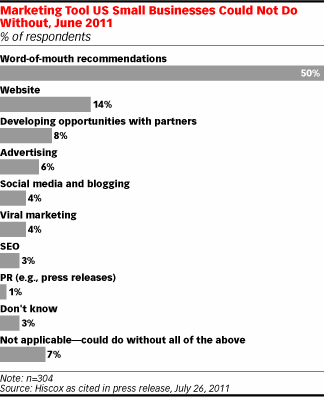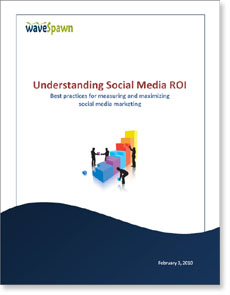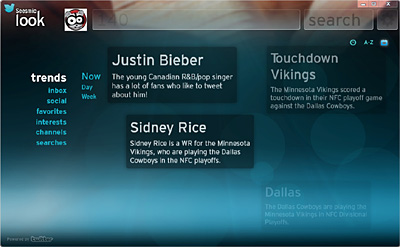Small businesses and social media
 These days, small business owners have a lot of marketing options to consider. There are a number of traditional marketing platforms including newspaper ads, print ads, billboards, direct mail, and TV commercials. Then combine these with a slew of digital and social media marketing options such as Facebook, Twitter, LinkedIn, YouTube, blogging, a custom mobile application development, Groupon, Places, foursquare, Yelp, PPC advertising, and mobile marketing to smart phones. Now you’ve got an extremely large pool of potential marketing combinations and strategies for small businesses to exploit.
These days, small business owners have a lot of marketing options to consider. There are a number of traditional marketing platforms including newspaper ads, print ads, billboards, direct mail, and TV commercials. Then combine these with a slew of digital and social media marketing options such as Facebook, Twitter, LinkedIn, YouTube, blogging, a custom mobile application development, Groupon, Places, foursquare, Yelp, PPC advertising, and mobile marketing to smart phones. Now you’ve got an extremely large pool of potential marketing combinations and strategies for small businesses to exploit.
The number of options and evolving technologies can be overwhelming for small businesses. Staying current with various platforms can be a challenge in itself. The amount of time required to simply manage and maintain a handful of online accounts can be daunting. In fact, a recent survey by Hiscox revealed that many small businesses were not using social media channels to promote their products and services. Only 12% of businesses considered social media promotion a necessity, 14% indicated they don’t know enough about it, and nearly 50% of respondents weren’t using social media at all.
Over 40% surveyed said that word-of-mouth was the main way they got business. This is an interesting statistic – as social media is essentially a word-of-mouth advertising vehicle. While offline forms of word-of-mouth remain critical for all brands, and certainly for small, local businesses, social media also plays a valuable role by giving customers a louder voice for their recommendations and helping to amplify that voice beyond their immediate circle of friends, family and colleagues.
So how can a small business focus on what they do best while at the same time take advantage of social media marketing? Easy – you don’t have to go it alone. There are marketing specialists to help sift through all of the social media options and develop a custom marketing strategy that fits your business model and budget. For the same reason you wouldn’t attempt to fill a cavity in your child’s tooth, there’s no need to take on tasks which exceed your limits.
Small businesses need to open their minds and be creative. Innovation is paving new opportunities for businesses to market themselves and secure customers. Integrated marketing campaigns can yield meaningful results. Whatever your objectives are, social media can be a powerful communication tool to help spread your message.
waveSpawn provides a full range of customized marketing solutions for small businesses. Please contact us to discuss your specific goals.



 I find it peculiar that every morning this week as I logged into Twitter, I was greeted with this same image – a whale being hoisted out of the water by a bunch of tweety birds. I’ve certainly encountered this image before, but not with the same frequency as this week. I can only assume that this is a good problem for Twitter.
I find it peculiar that every morning this week as I logged into Twitter, I was greeted with this same image – a whale being hoisted out of the water by a bunch of tweety birds. I’ve certainly encountered this image before, but not with the same frequency as this week. I can only assume that this is a good problem for Twitter. Have you ever noticed how many business-related social media accounts have little, if any, postings or messages? You know the ones… they hastily ran out and setup a corporate Facebook, Twitter, YouTube, and blog account without a plan or clue as to what they were doing. Somewhere along the way they strayed from logic. It’s as if they’re proclaiming “hey we’re not only slackers, but we’re cutting edge slackers.”
Have you ever noticed how many business-related social media accounts have little, if any, postings or messages? You know the ones… they hastily ran out and setup a corporate Facebook, Twitter, YouTube, and blog account without a plan or clue as to what they were doing. Somewhere along the way they strayed from logic. It’s as if they’re proclaiming “hey we’re not only slackers, but we’re cutting edge slackers.”
 For many small businesses, measuring the return on investment (ROI) for social media is a mystery. While some of these businesses actively engage in blogging, tweeting, and perhaps even Facebook, they have no idea on how to gauge the effectiveness of their efforts. The remaining businesses that have not entered the social media frenzy are hesitant to get started because they too are looking for an accurate method of determining the ROI or impact of their social campaigns.
For many small businesses, measuring the return on investment (ROI) for social media is a mystery. While some of these businesses actively engage in blogging, tweeting, and perhaps even Facebook, they have no idea on how to gauge the effectiveness of their efforts. The remaining businesses that have not entered the social media frenzy are hesitant to get started because they too are looking for an accurate method of determining the ROI or impact of their social campaigns.
 After millions of people scrambled to get a Twitter account activated, they later asked themselves – ok, what’s next? While the underlying concept behind Twitter is interesting – stay connected with brief snippets, the software is still in its infancy. There are several companies trying to add more functionality and purpose to this infrastructure.
After millions of people scrambled to get a Twitter account activated, they later asked themselves – ok, what’s next? While the underlying concept behind Twitter is interesting – stay connected with brief snippets, the software is still in its infancy. There are several companies trying to add more functionality and purpose to this infrastructure. Many people continually ask me how they can make money or increase sales from social media. My answer is simple: it’s like losing weight. There are no shortcuts or magic pills that will instantly shed pounds. Losing weight is a lifestyle change and commitment to health and fitness.
Many people continually ask me how they can make money or increase sales from social media. My answer is simple: it’s like losing weight. There are no shortcuts or magic pills that will instantly shed pounds. Losing weight is a lifestyle change and commitment to health and fitness.